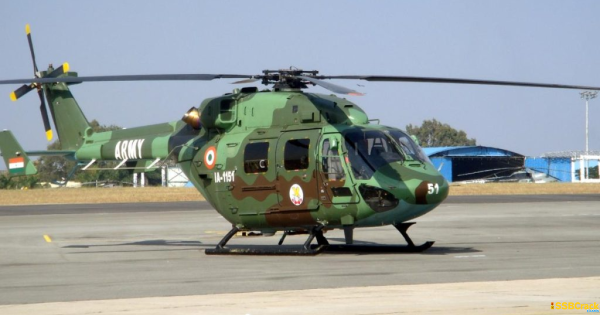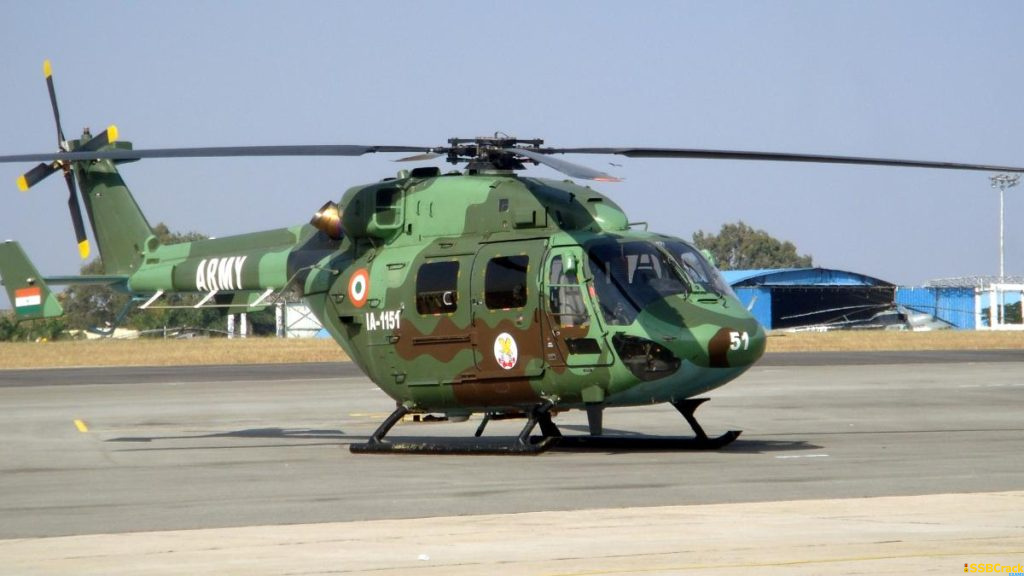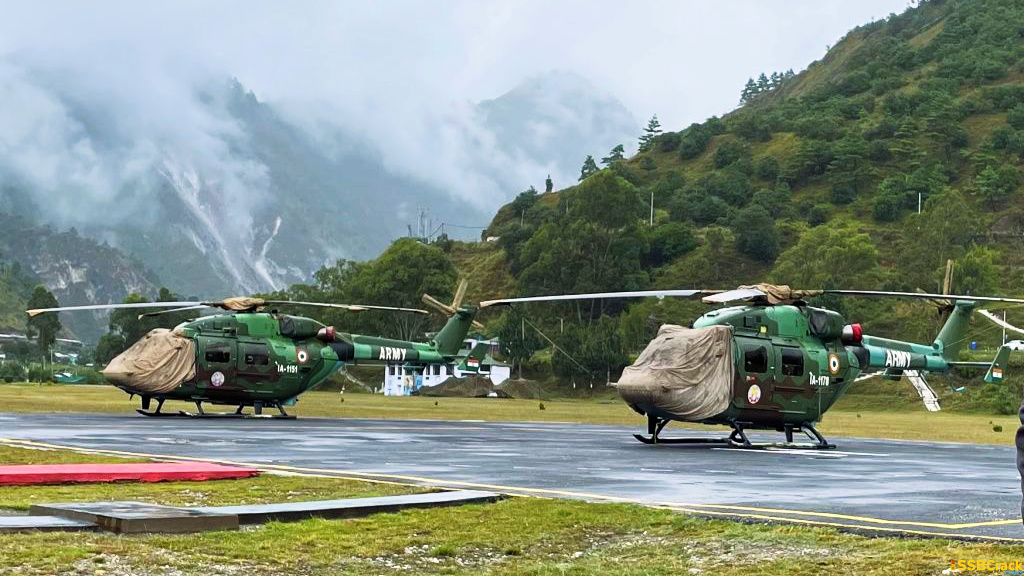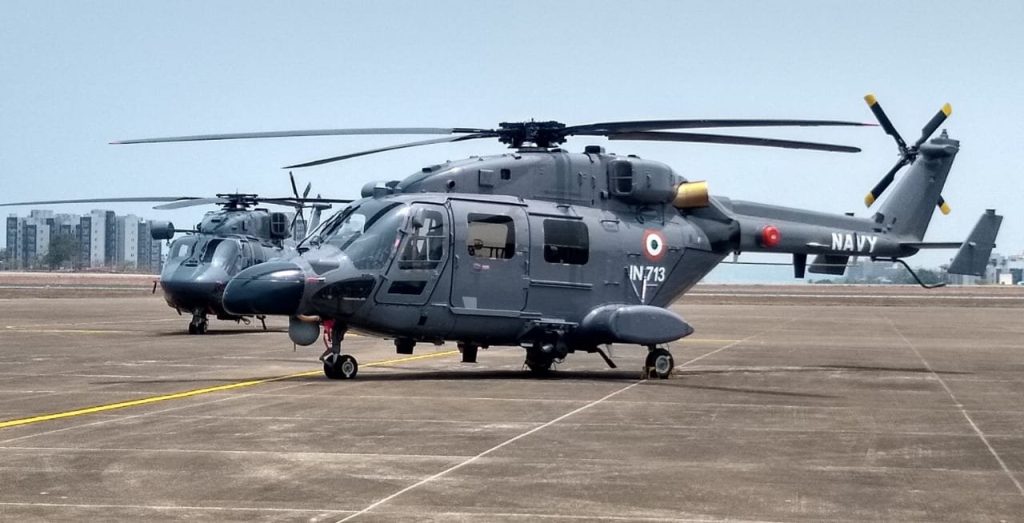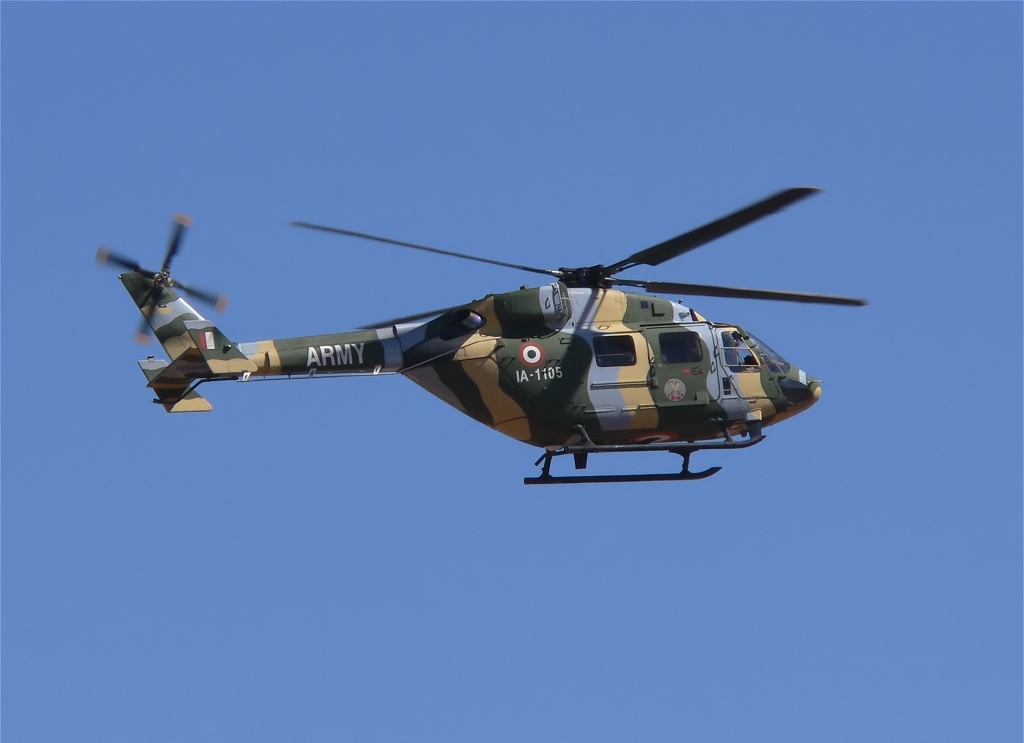Flaws on the Dhruv advanced light helicopter, whose safety record was called into question following a succession of accidents earlier this year, have been identified and are being corrected on a priority basis to address flight safety issues. Some design and metallurgy flaws came to light during the investigations into the recent mishaps involving the India-made helicopter, according to one of the officials listed above, who requested anonymity.
ALH Dhruv in Indian Armed Forces
More than 330 DHRUVs are operated by the Army, Air Force, Navy, and Coast Guard. During March-May, the helicopter was grounded, then cleared for flight, and then grounded again after safety concerns were raised in the aftermath of three incidents. The helicopters, created and constructed by the state-owned Hindustan Aeronautics Limited, are being cleared to fly in batches for urgent missions following thorough examinations, according to a second official, who also declined to be identified.
The DHRUV has been engaged in 12 mishaps in the last five years, including the May 4 crash-landing of an army helicopter in Jammu and Kashmir’s Kishtwar, which killed one soldier and injured two pilots. Previously, on March 26, a coast guard DHRUV made a forced landing in Kochi, and on March 8, a navy DHRUV ditched (emergency landing in water) into the Arabian Sea.
The resumption of urgent flights, as specified in a government letter dated May 22, followed the prescribed “satisfactory conduct of independent maintenance flight safety audit” of critical items and systems, as well as compliance with safety-related “special technical instructions and alert notices” issued by technical authorities.
According to a major government regulatory authority responsible for military aircraft airworthiness certification, a design assessment of a “safety-critical system” on the DHRUV may be in order, according to HT on May 10. On April 23, the Bengaluru-based Centre for Military Airworthiness and Certification (CEMILAC) notified the three military and the coast guard. It requested a design assessment of the booster control rods in order to improve the airworthiness of the DHRUV.
After an expert committee formed in the aftermath of the navy DHRUV incident on March 8 explored the possible failures that led to the incident, CEMILAC, which functions under the Defence Research and Development Organisation (DRDO), reached the conclusion that the design review of the booster control rods is mandatory. These rods allow pilots to control the motion of the helicopter, and any failure can dramatically reduce power input to the rotor blades and cause accidents. The CEMILAC chief executive (airworthiness) committee determined that the most likely cause of the March 8 event was a technical failure – an error in the assembly of serrated washers in the booster control rods. It advised both short-term and long-term measures to improve the DHRUV’s safety.
CEMILAC wrote in a letter dated April 23 to HAL, the three services, and the coast guard, “The design, development, and qualification of the steel booster control rods that are tolerant to assembly errors shall be expedited, and the compliance of the new design shall be aimed for implementation in six months to one year.” CEMILAC outlined procedures for the DHRUV, Rudra (the armed version of the DHRUV), and Light Combat Helicopter (LCH) to resume operations. The Indian Air Force’s latest LCHs were also grounded earlier because they share some characteristics with the DHRUV.
It stated that approval for these platforms, which are restricted to 100 flying hours apiece, would be granted following mandatory inspections. Further authorization for up to 500 flying hours or one year, whichever comes first, would be contingent on HAL passing two essential tests, it noted. These tests include flight testing two helicopters with instrumented control rod assemblies to check the multi-axis loads on the control rods, as well as fatigue testing the rods with properly assembled serrated washers to confirm their original capacity.
To crack the SSB Interview and join the Indian Army as an Officer, You can join our SSB interview live classes batch and we recommend you to Enroll SSB INTERVIEW ONLINE COURSE. Trusted by thousands of defence aspirants.
Also read:
